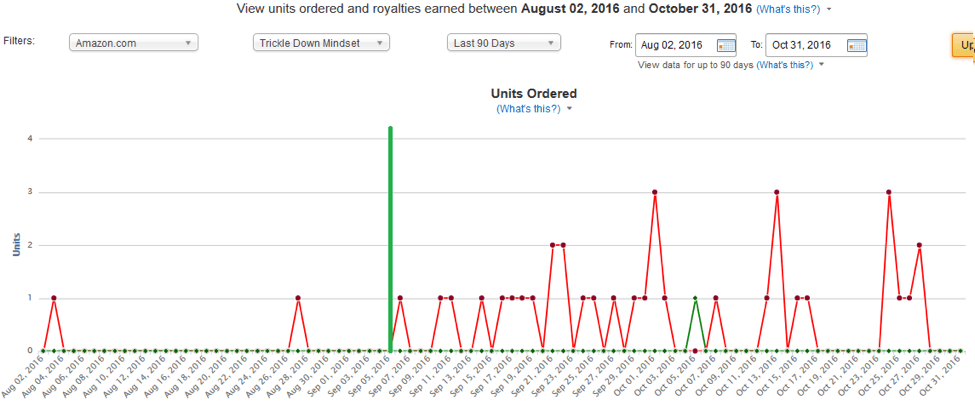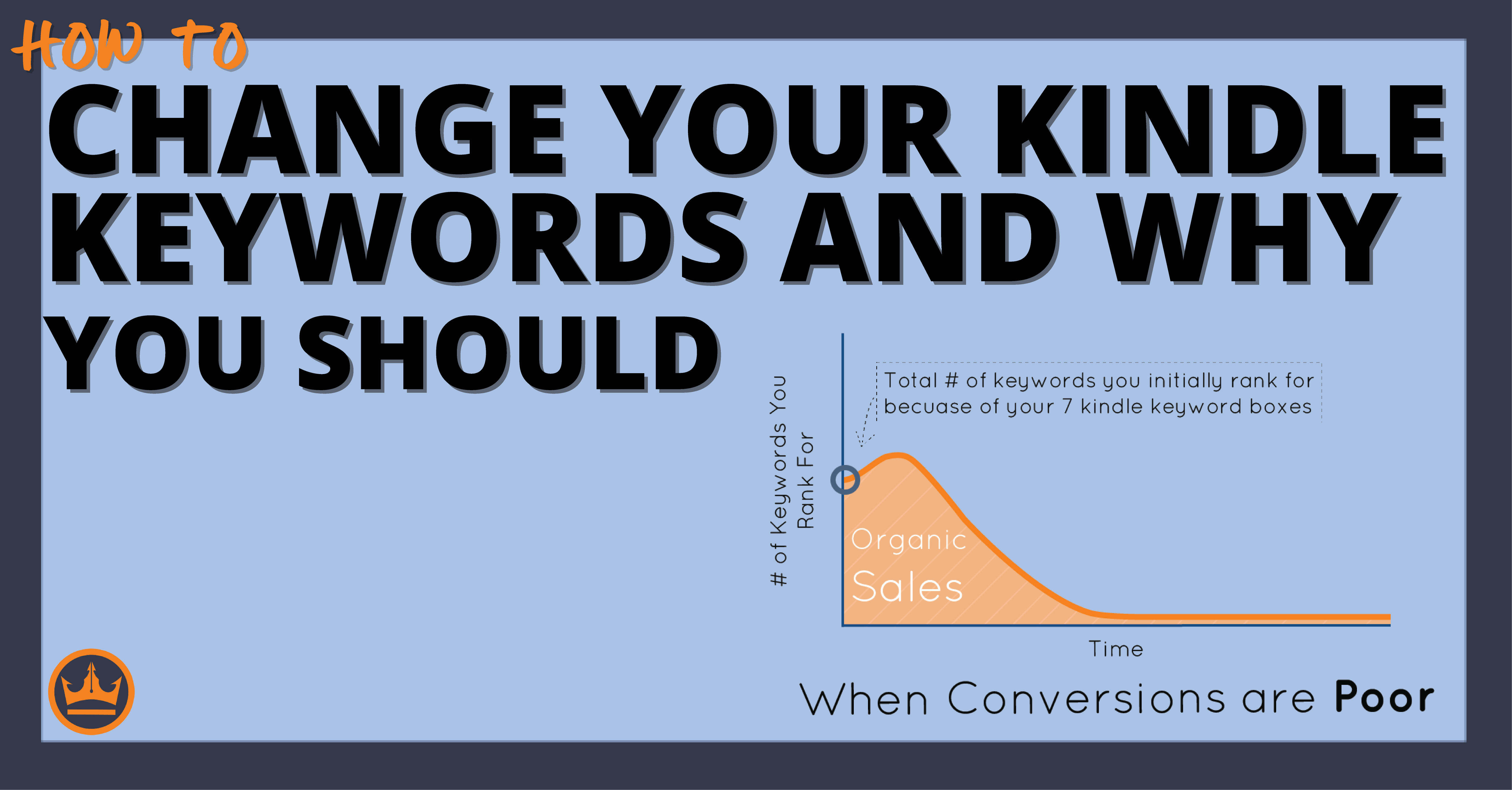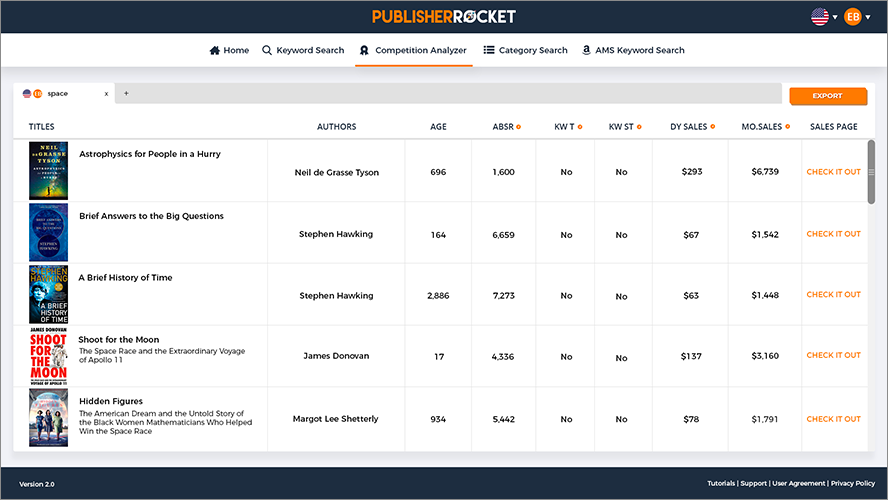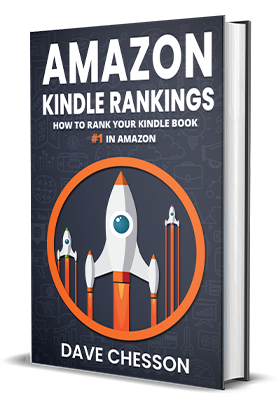Table of contents
About a year ago, Kindlepreneur posted an article teaching authors how to setup Amazon ads for their books.
In the article, Dave said that while the Amazon ads system showed promise, it still had some problems that Amazon needed to fix. However, once that happened, those who learned how to use Amazon’s Marketing Services (AMS) and were the first to enter this market would reap the greatest benefit.
Well, that time is now. Fully revised, the new AMS service has low competition and shows major signs of being a profitable marketing tactic for books.
So, what is AMS?
This system allows you to place an advertisement of your book alongside other books in Amazon. Basically, you can set up advertisements that get your book in front of more Amazon shoppers.
This is quite possibly the easiest way to get your book discovered #BookMarketingClick To TweetDon’t believe me?
I’ll show you, plus I’ll give you some tips that can help you get started immediately.
In this article, you’ll learn:
- What happened with my books because of AMS
- Lessons learned and pitfalls to the system
- Ways to increase your Amazon Advertising ROI
But Before You Jump In
If you're new to AMS or have been doing it for a while, I highly recommend you check out Dave's article on Book Advertisements, and take Kindlepreneur's FREE AMS Advertisements for Books course. It's jam packed with enough content and over the shoulder videos that will show not only learn about AMS, but be able to create profitable AMS campaigns.
It is assumed that for the rest of the this article you have a basic understanding of AMS, and so I'll continue by discusssing my AMS campaign as a casestudy to help further the understanding of what can be accomplished through AMS book ads, and also some areas I think authors should be aware of.
Amazon Marketing Services Case Study
Okay, now let’s jump right into the good stuff. What did my run of AMS do for my book sales?
Let’s start with my bestseller, The Art of Persistence. Published in April 2015, it had a pretty solid launch, but unlike most of my books, it has continued to sell fairly consistently since.
Below is a picture of my sales, and the green line represents when I started to do the AMS ads.

Not bad considering my sales doubled after implementing the AMS ads.
For this next one though, let’s look at a book that had an amazing launch, but sales quickly died off after I stopped doing all the book site promotions and marketing hustle. I published Trickle Down Mindset in January 2015.

It’s not exactly making me rich…but you can clearly see that AMS brought a dead book back to life. I’ll call that a victory.
All in all, I had 6 different campaigns, and AMS helped to increase book sales at varying degrees.
Book Marketing Made Simple
Over 47,000+ authors, NYT bestsellers, and publishing companies use Publisher Rocket to gain key insight to the market. Help your book now
Yeah, But Did You Make Any Money?
Like with all advertising, it costs money to get your book ad in front of more shoppers. So, did I actually make any money or did I spend more than I made?
That answer is simple…yes, but it didn’t start that way.
When I started, I made a lot of costly mistakes that ate into my bottom line. Here are a couple:
1. Keyword Selection
No, not the Kindle keywords that Dave Chesson always goes off on…I mean the keywords you want your advertisement to show up for. These are incredibly important for the success of your campaign. Therefore, when you’re looking at your keywords, here are my recommendations:
- Amazon’s suggestions aren’t worth much so don’t rely on them.
- It’s better to target Author names and book titles that are closely related to your book – aka your competitors – instead of descriptive words.
- Start with at least 300 keywords before you start your campaign – Yes, you read that right…300.
2. Budget it right
It’s easy to get carried away when seeing a direct effect between your ads and you getting more sales. However, don’t let it get away from you. On the other hand, though, I recommend you set up at least a monthly ads budget of $90 per book per month. This will be enough to help you acquire decent data, without losing lots of money in the process.
3. Track the cost metrics every day:
Make snapshots of data every day, preferably at midnight, because KDP's and Create Space's reporting periods are from midnight to midnight PCT. (I admit I have it easy, PCT midnight in my timezone is 9:00 am.)
Capturing data every day will give you trends. You will not only know the total expenses, clicks, and impressions, but also how they were yesterday, a day before, and a week ago.
4. Know the profitability of each sale
The only way you can figure out if you are breaking even in your ads expenditure is by ACTUALLY knowing how much money you make per sale. And, the biggest mistake most new authors to AMS make is that they interpret Amazon’s “Est. Total Sales” as their profit…but it isn’t – and no, Amazon doesn’t report your profit which is sort of sneaky of them.
Remember, after the sale of a book, Amazon takes their 30% or 70% depending on your price. Plus, they also take that cursed downloading fee as well. And if you live in a country where Amazon does tax withholdings, don’t forget that either. I live in Poland and because of that, Amazon withholds an extra 10% and I still have to pay taxes to Poland on that income as well.
So, the real danger appears when authors think they made $100 due to reading the Est. Total Sales in their AMS dashboard, but in truth, they only gained $44 in profit. This could lead authors to believe they are making money from their AMS campaign, but in truth, they are losing money.
To help me with this, so that I don’t lose track of what is really “profitable,” I track all of those metrics in a Google sheet. Of course, I guesstimate how many copies were purchased from ads and how many were organic, but it really helps.
You MUST Have a Paperback for This to Work
The profit margins for paperbacks are usually much better than with kindle only. Therefore, if you offer paperbacks as well as kindle, you stand to make more money from your ads.
Plus, with two different versions of your book (paperback and kindle), you have a better chance of a sale – because there are still some people that won’t do the kindle thing and need the feel of paper on their fingers…I can relate.
You MUST have a paperback for Amazon Ads to work #BookMarketingClick To TweetTherefore, with the increase of potential profits by having your book in both paperback and kindle, you can spend more on advertising and take more risks. With the increase in the margins, you can now target specific authors with an especially valuable audience and spend more to acquire their clicks. However, with Kindle only versions, especially if they are priced low, you simply don't have such flexibility and your profitability is endangered.
Therefore, by also offering a paperback of your book, you stand to make more money from the AMS sale. This, in turn, improves your break even point.
Learn Amazon Ads for Free
Check out my full free video course that will teach you how to make effective Ads to increase your book sales
Sign Up NowSo, What’s Next?
Right now, using Amazon’s Ad system to sell your book is pretty profitable. There isn’t much competition, so therefore, the cost you have to pay per click of your advertisement is pretty low.
This simple ads system can help you:
- Revive a book of yours that isn't making sales
- Increase sales of any of your books
- Help you get discovered
- Increase your email optins, if your book has an optin offer
- Improve your Amazon Best Seller Rank, which increases your Category rank
And a whole lot more…
However, instead of spending money and making mistakes, I’d highly recommend you take Dave's free AMS course and learn all the different aspects to AMS. It’s an incredible opportunity, and knowledge is power (and money) when it comes to advertising systems like AMS.
About the Author: Michal Stawicki

Michal spends his days in IT and moonlights as a writer, but he hopes one day to turn his writing into a full-time passion. He lives in Poland with his wife and three kids.
He writes about personal development methods based on his personal experience. If you are looking for concrete strategies, you will find them in his books. Check out his blog, where he shares his superfast outlining process for non-fiction books (direct download, no opt-ins) and other resources for authors:http://expandbeyondyourself.com/outlining/









I have 1 ad each for 5 books now with only $3 day (but ads don’t use that much) and I see a trickle of sales. I have 50 keywords. Have no idea how to come up with 300! But I will go back and ad author names and book titles.
Amen. Authors and titles are 80% of my keywords.
I got also good results from common words (you, yours, from and so on), but I bid them very low. They are not relevant so got plenty of clicks and little sales.
Yes, looking forward to the webinar next week with all the nuts and bolts of this! Thanks for another timely and interesting article!
Seriously? Hmm, hmm, some food for thoughts…
I love Amazon ads! My best results have been with ridiculously simple interest based ads. Was actually able to boost my book to #1 in a decent category. When are the details and “how to’s” comin for this post? Thanks!
Censorship cut it out 😉
My post included some ‘how to’, but it was all over the place, so Dave left the meat: case studies, tracking metrics and paperbacks.
Thanks for this great update. I will now try this out. I guess I should test with books that are not doing well enough and leave the one that already sell plus 5 daily?
Thanks bro
Not exactly, it works for all. See below my 3 screenshots. The first book, A Personal Mission Statement, was selling about 1-2 copies per day. It sold 33 copies in November and 63 copies in the first 9 days of December with ads.
If I were you, I would invest in books that had good launches and died out in the first place, but I wouldn’t neglect solid books as well.
I wrote this post almost a month ago. Since then, I’ve got some shockingly good results with 3 new campaigns for my old books. See the screens. And I sold 51 paperback copies for those 3 books in 8 days. https://uploads.disquscdn.com/images/c88edbc4989dfe1d2e5178129c4b7323bfd1cc79f31395cddbf14325e3ef8bc9.png
Haha…yeah, we’ve got just about six months of content already made. One month waiting…we definitely fast tracked it 😛